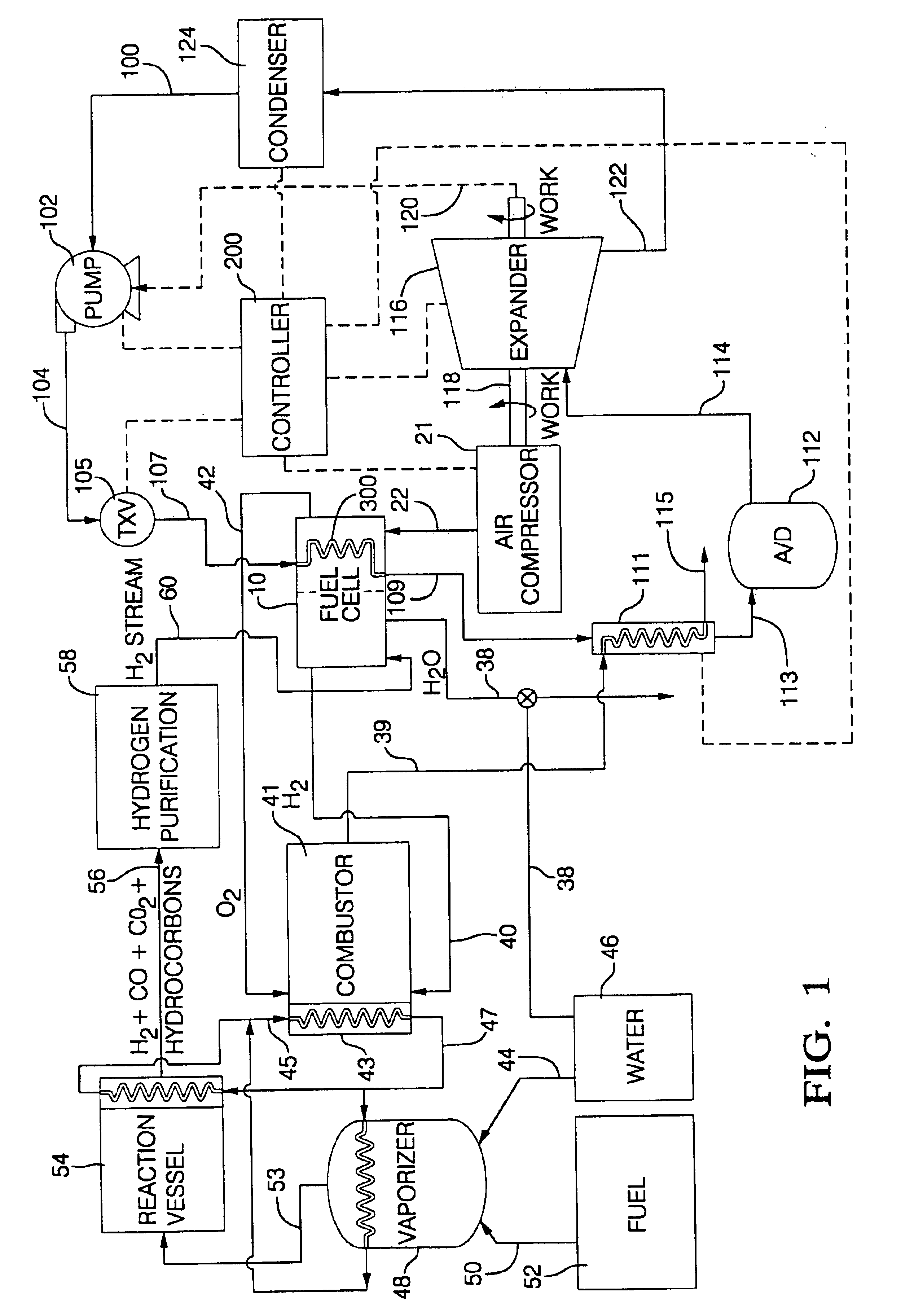Cogeneration system for a fuel cell
a fuel cell and cogeneration technology, applied in electrochemical generators, machines/engines, borehole/well accessories, etc., can solve the problems of endothermic processes, inapplicability, and limited fuel cell development, so as to reduce the size of the cooling system, reduce the size of the stack, and reduce the size of the ancillary power equipment
- Summary
- Abstract
- Description
- Claims
- Application Information
AI Technical Summary
Benefits of technology
Problems solved by technology
Method used
Image
Examples
Embodiment Construction
[0018]FIG. 1 illustrates a fuel cell process, system and components useful in the present invention. A water stream 44 from a water source such as a water reservoir or holding tank 46 is supplied to a vaporizer 48. A fuel stream 50 from a fuel holding tank 52 is also delivered to the vaporizer 48. Preferably the fuel stream 50 is an organic based fuel such as methanol or gasoline. The fuel and water are vaporized together and a resulting vaporized fuel / water stream 53 is delivered to a reaction vessel 54, which may in this case be used to perform a fuel reformation process.
[0019]Of course the present invention can be utilized with a variety of different systems besides the fuel reformation process described hereafter. The present invention can be utilized in any system that delivers a fuel to a fuel cell stack for conversion into electricity. For example, the present invention can be utilized with a pure hydrogen system. In such a case, the fuel and water tanks 52, 56, vaporizer 48,...
PUM
 Login to View More
Login to View More Abstract
Description
Claims
Application Information
 Login to View More
Login to View More - R&D
- Intellectual Property
- Life Sciences
- Materials
- Tech Scout
- Unparalleled Data Quality
- Higher Quality Content
- 60% Fewer Hallucinations
Browse by: Latest US Patents, China's latest patents, Technical Efficacy Thesaurus, Application Domain, Technology Topic, Popular Technical Reports.
© 2025 PatSnap. All rights reserved.Legal|Privacy policy|Modern Slavery Act Transparency Statement|Sitemap|About US| Contact US: help@patsnap.com


